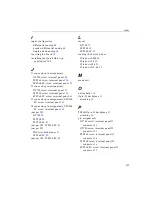
Appendix A
122
Analog Outputs
Most data acquisition boards have a minimum of two analog output
channels, with a resolution of 12 to 16 bits (even though the accuracy
may be less).
On all Data Translation boards, we ensure that the analog outputs do
not break into a high frequency oscillation with high capacitance
loads that may be experienced with long cables. Typically, the analog
outputs drive 1,000 pF without degradation and bandwidth-limit
with higher capacitive loads.
The grounds of most boards are optimized for analog inputs at the
expense of some logic or high-frequency noise on the analog outputs.
This is because the analog and digital grounds of the board are
connected at the ADC’s input.
The analog outputs are brought out as a high and a low signal, but
the low side is the analog ground at the DAC’s output buffer. To
remove the high-frequency noise and smooth the glitch energy on the
analog outputs, you can install a 15 kHz RC filter on the output, a
100
Ω
resistor in series with the output, and a 0.1
µ
F capacitor
between the output side of the 100
Ω
resistor and output low.
Summary of Contents for DT3010 Series
Page 1: ...R DT3010 Series UM 16868 C Getting Started Manual ...
Page 22: ...Chapter 2 12 ...
Page 36: ...Chapter 3 26 ...
Page 114: ...Chapter 5 104 ...
Page 136: ...Appendix A 126 ...
Page 142: ...Index 132 ...











































